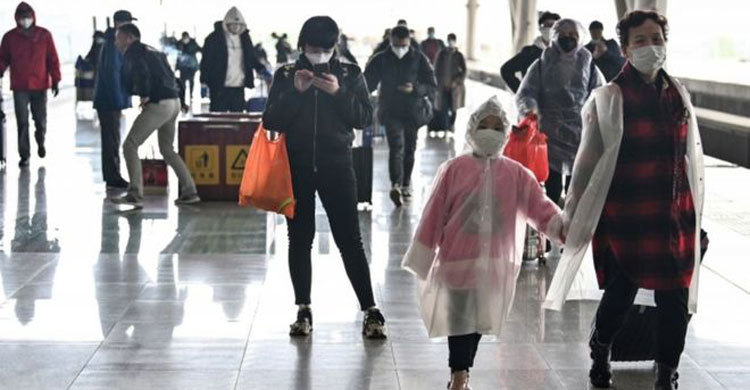Coronavirus cradle Wuhan partly reopens after lockdown

The city in China where the coronavirus pandemic began, Wuhan, has partially re-opened after more than two months of isolation.
Crowds of passengers were pictured arriving at Wuhan train station on Saturday, reports BBC.
People are being allowed to enter but not leave, according to reports.
Wuhan, the capital of Hubei province, saw more than 50,000 coronavirus cases. At least 3,000 people in Hubei died from the disease.
But numbers have fallen dramatically, according to China's figures. The state on Saturday reported 54 new cases emerging the previous day - which it said were all imported.
As it battles to control cases coming from abroad, China has announced a temporary ban on all foreign visitors, even if they have visas or residence permits. It is also limiting Chinese and foreign airlines to one flight per week and flights must not be more than 75% full.
What signs are there of Wuhan reopening?
The virus is thought to have originated in a seafood market in Wuhan that "conducted illegal transactions of wild animals".
The city's 11 million residents have been shut off from the rest of the world since the middle of January, with roadblocks around the outskirts and drastic restrictions on daily life.
But roads reopened to incoming traffic late on Friday, according to Reuters news agency.
And state media said the subway was open from Saturday and trains would be able to arrive at the city's 17 railway stations.
Nineteen-year-old student Guo Liangkai, who arrived back in the city after three months, told Reuters: "First of all, it makes me very happy to see my family.
"We wanted to hug but now is a special period so we can't hug or make any actions like these."
All arrivals in Wuhan have to show a green code on a mobile app to prove that they are healthy.
Officials say restrictions on people leaving the city will be lifted on 8 April, when domestic flights are also expected to restart.
The virus emerged in China in December and more than 3,300 people there have died from the infection - but both Italy and Spain now have higher death tolls.
It is now battling to control a wave of imported cases as infections soar abroad.
This so-called "second wave" of imported infections is also affecting countries like South Korea and Singapore, which had been successful in stopping the spread of disease in recent weeks.

